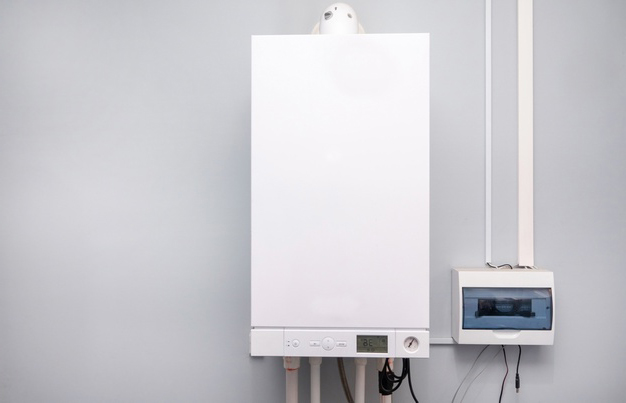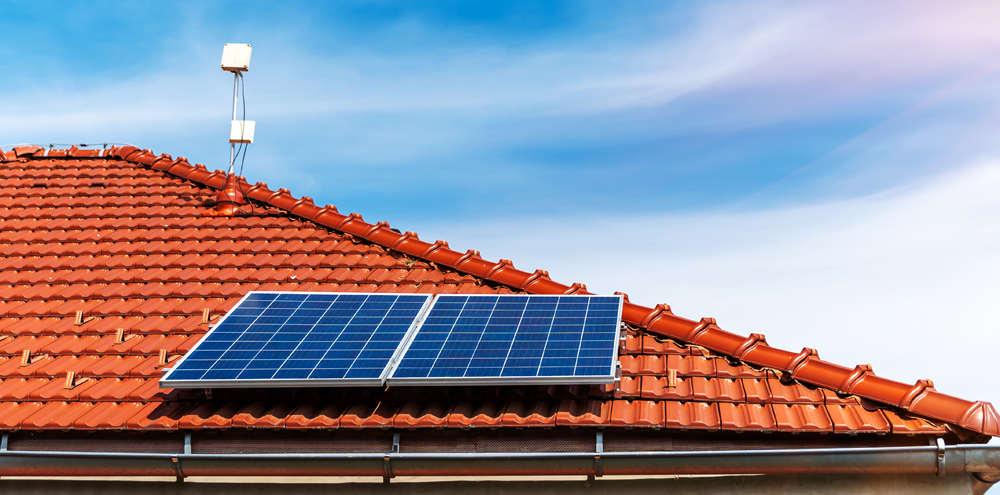Can solar panels be used to heat your home? Yes. Solar panels do more than generate electricity. When you install solar panels, you can use renewable energy to heat up interior spaces in your home through a process called active solar heating. This process can happen through air or liquid systems, which can both be used as a supplement to forced air systems that you already have installed at home.
What We'll Cover
In this article, we discuss how you can use both liquid-based and air-based active solar heating systems to heat your home with solar panels. Additionally, we discuss the difference between active solar panels and passive solar panels, as well as how you can power an electric furnace with solar panels.
Can Solar Panels Be Used for Central Heating?
Yes. You can use the solar panels on your roof to generate the central heating in your home. Active solar heating is a cost-effective way to supply your home with heat, especially if you live in colder climates. In fact, depending on the state in which you live, you may be able to receive tax exemptions for using solar energy, as well as other renewable energy sources. If you want to use solar panels to provide central heating for your home, a liquid-based active solar heating system will work best. However, you can also heat several rooms in the house through an air-based active solar heating system. Below, I discuss the difference between the two systems, and how each system will ideally work to supply heat.

How Does Liquid-Based Active Solar Heating Work?
Liquid-based active solar heating systems use solar liquid collectors to produce heat, which are also commonly used for water heating systems. There are several types of liquid collectors you can choose—including concentrating tube collectors and evacuated tube collectors—but flat-plate collectors are most commonly used for central heating. To produce heat, the liquid collectors transfer heat with a liquid, which in this case could be water, antifreeze liquid, or another liquid capable of heat absorption. The liquid is then pumped to a destination, like a storage tank.
Once you install a liquid-based active solar heating system, you can distribute the solar heat around your house via several options, including:
- Radiant flooring
- Hot water baseboards
- Radiators
- Central forced air system
Radiant flooring is what works best for liquid-based active solar systems. This is because radiant floor heating is effective at low temperatures. Radiant flooring typically has a title finish because carpeting and rugs will decrease the effectiveness of the system. Although radiant flooring slabs take longer to heat up spaces, compared to other options like radiators and hot water baseboards, they will keep the space heated more consistently and for longer periods of time. Additionally, in case the solar panels malfunction and cannot provide heat, you can use conventional boilers or a regular water heater as a back-up heating method.
If you choose to go a different route than radiant floor heating, your other options include a central forced air heating system, hot water baseboards, and radiators. Although these options are not as effective as radiant flooring, these methods are also effective in supplying heat to rooms, when installed and planned correctly.
How Does Air-Based Active Solar Heating Work?
In addition to using a liquid-based system to heat your home, you can also use an air-based system. Air-based systems use air to take in and distribute the heat that is generated by your solar panels. Not only can this system heat the rooms in your home directly, but they can also preheat the air going into them. While using liquid collectors from a liquid-based system may be more effective for central heating, the air collectors from an air-based system actually are capable of providing more heat early and late in the day, compared to liquid systems. Additionally, liquid-based systems run the risk of freezing. With an air system, you will never have to worry about that.
The most common form of air-based active solar heating in homes is through use of room air heaters. In fact, you can build your own room air heater for a couple of hundred bucks. Room air heaters use air collectors that are installed on the roof, and they can typically heat a couple of rooms at once. The air collectors have metal plates that gather heat that the solar panels generate. Then, the air from the collector is transferred into the room to supply heat. Not all solar panels have the capacity for active solar heating, especially if they haven't been able to store enough energy due to cloudy days.
Powering Electric Radiators With Solar Panels
You can also use solar panel energy to power the electric radiators in your home, as well as other home appliances like dishwashers, washing machines, and televisions. To get started with powering your electric radiators with solar panels, you’ll first need to make sure that you have enough power. If you have a four-member family, you will want solar panels with at least 5,000 watts to heat your home properly. Using solar panels to power electric radiators can save you a lot of money, especially during the winter months.
Heating an Electric Furnace With Solar Panels
Electric furnaces are cheaper, more durable, and require less maintenance than gas furnaces, and you can also power them with solar panels. In fact, electric furnaces work better in warmer climates, where solar panels are more popular. However, you should note that electric furnaces are less efficient with heat than gas furnaces. If you power an electric furnace with solar panels only, there may be days where you don’t receive as much heat.
Active Solar Design vs. Passive Solar Design
In this article, I’ve primarily focused on active solar panels, and how you can use liquid-based and air-based systems to provide central heating to your home. However, you can also look into passive solar designs. The difference between active solar design and passive solar design is the presence of and use of other sources and devices to generate solar energy.
For instance, passive solar designs are basic and do not require the use of other sources. Examples of passive solar designs include greenhouses and sunrooms. To generate heat in either of these settings, the sun’s rays penetrate through the glass, allowing the room to heat up. On the contrary, active solar designs require the use of extra resources like pumps and power blowers to generate heat. These extra sources are what allow heat to be stored and used later. That is why active solar designs are most commonly used to heat and cool homes.
Final Thoughts
Can solar panels be used for heating the rooms in your home? The answer is yes. You can use active solar heating to supply the rooms in your home with heat—plus, you may be able to save money for using renewable energy through tax exemptions, depending on your state laws. Active solar design comprises both liquid-based and air-based systems. While both will heat your home, liquid-based systems are more effective. Although, if you’re looking to save money, an air-based system will work, too.
Sources:
- Active Solar Heating - https://www.energy.gov/
- What Is the Difference Between Active & Passive Solar Collectors - https://homeguides.sfgate.com/
The responses below are not provided, commissioned, reviewed, approved, or otherwise endorsed by any financial entity or advertiser. It is not the advertiser’s responsibility to ensure all posts and/or questions are answered.






